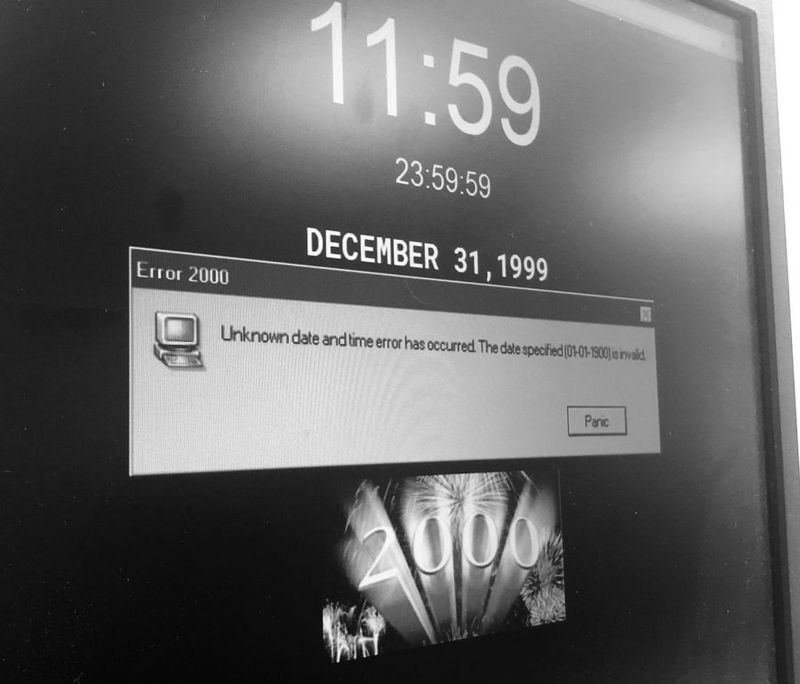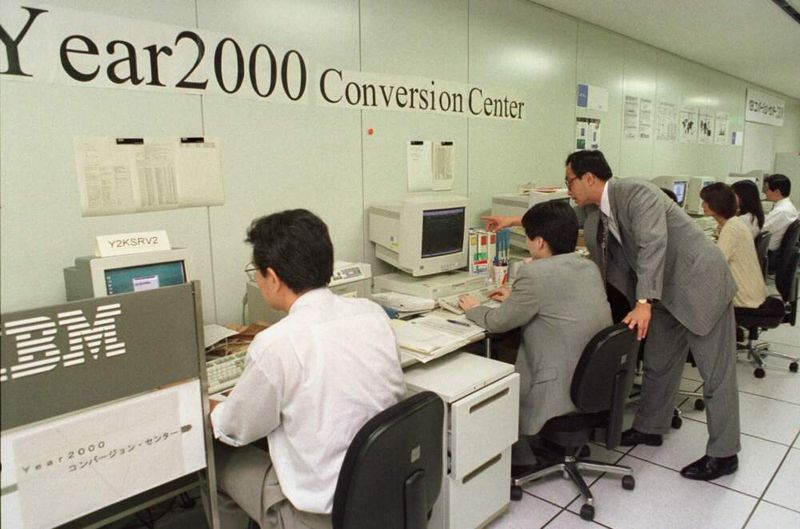The transition to the year 2000 was fraught with anxiety and sensational predictions. Known as the Y2K bug, this issue stemmed from computers recording years with only two digits. As the millennium approached, fears escalated about what would happen when systems updated to the year “00,” potentially mistaking it for 1900. Despite the panic, the outcome was far less dramatic than anticipated. This post explores seven key aspects of the Y2K phenomenon, revealing how media hype, governmental action, and public perception played roles in what many consider a greatly exaggerated crisis.
1. What Was the Y2K Bug?
In the late 20th century, a tiny oversight in software design led to global anxiety. Known as the Y2K bug, older computer systems saved memory by storing year dates as two digits. Imagine reading “99” for 1999, but suddenly encountering “00”—would it mean 1900? This was the fear. Experts warned of potential chaos if systems failed to interpret the new millennium correctly. The challenge was immense, with possibilities of errors in calculations and data loss looming. A simple coding decision turned into a widespread technological conundrum with a looming deadline.
2. The Doomsday Predictions
As the year 2000 approached, doomsday predictions grew louder. Some warned of power grids failing, plunging cities into darkness. Others imagined air traffic control systems malfunctioning, risking aviation disasters. Financial chaos was predicted, with fears of bank records vanishing overnight. Even nuclear facility glitches were feared, with catastrophic consequences. These scenarios painted a grim picture of an impending apocalypse. The media amplified these fears, creating a sense of inevitability that gripped the public. Despite the alarming forecasts, the world stood on the brink, waiting to see what the new year would bring.
3. The Media Frenzy Made It Worse
In the lead-up to Y2K, media outlets seized the story, turning it into a spectacle. Headlines screamed of impending disaster, urging people to prepare. Some suggested stockpiling food and cash, fueling public anxiety. Survivalists took action, buying generators and canned goods, even building bunkers. Television shows like The Simpsons and The X-Files found humor in the chaos, reflecting the absurdity of the panic. This media-driven frenzy played a significant role in escalating fears. While many jokes circulated, the underlying tension was palpable, highlighting society’s vulnerability to sensationalism.
4. Governments & Companies Spent Billions to Fix It
Faced with the Y2K threat, governments and companies worldwide took action. In the U.S., over $100 billion was spent to update software. Programmers worked tirelessly, rewriting code to avert potential disasters. Despite the intense preparation, some countries, like Italy and Russia, did minimal work yet faced no major issues. The substantial efforts led to a largely uneventful New Year’s Day. The proactive measures were both costly and necessary, demonstrating a unified response to a perceived threat. This global mobilization remains a significant chapter in technological history, reflecting the power of collaboration.
5. What Actually Happened on January 1, 2000?
When the clock struck midnight on January 1, 2000, the world held its breath. Contrary to fears, the day began quietly. Minor glitches occurred, like a radiation monitor failing at a Japanese nuclear plant, quickly fixed. Some credit card machines hiccuped, and a few lottery systems humorously printed tickets dated “1900.” Most people awoke to a regular morning, with no catastrophic events unfolding. The anticipated chaos failed to materialize, leaving many relieved and some puzzled. The calm start to the new millennium was a testament to the effective prevention efforts, but it also sparked debates.
6. Why Was Y2K a Non-Disaster?
The absence of disaster on Y2K was due to several factors. Massive preventative efforts ensured systems were ready for the new millennium. Many critical systems already utilized four-digit years, avoiding confusion. The worst-case scenarios assumed inaction, but the global response proved otherwise. With extensive preparation, potential issues were mitigated. The perceived threat faded, leaving behind a mix of relief and skepticism. While some doubted its seriousness, the coordinated efforts highlighted the importance of preparedness. This non-disaster became a case study in how diligence can avert crises, showcasing human ingenuity.
7. The Aftermath: Conspiracy Theories & Jokes
After Y2K, conversations shifted to conspiracy theories and humor. Some believed the threat was exaggerated for profit, benefiting tech companies. Others jested that Y2K was a success story because issues were fixed in time. The non-event fueled debates on whether it was a genuine crisis or pure hype. Humor flowed freely, with jokes about the anticlimactic outcome circulating widely. The legacy of Y2K is a blend of laughter and lessons, reflecting on society’s response to perceived threats. It remains a topic of curiosity and debate, a reminder of the power of collective action and wild imaginations.







